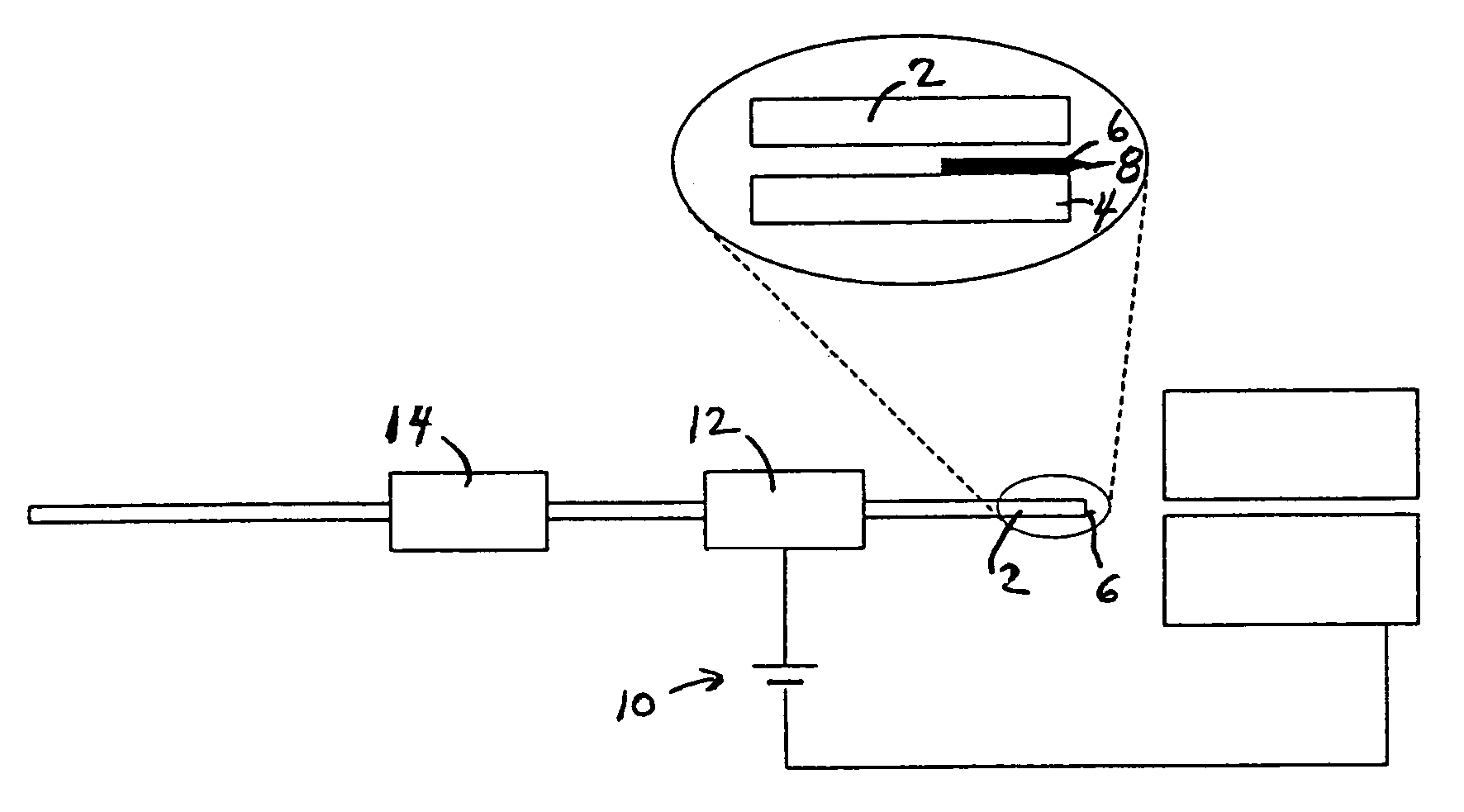Electrospray ionization using pointed fibers
a technology of electrospray and fibers, applied in the direction of isotope separation, electric discharge tubes, particle separator tubes, etc., can solve the problems of reducing the resolution of the separation system on the device, reducing the sensitivity of the electrospray, so as to improve the electrospray efficiency and enhance the sensitivity
- Summary
- Abstract
- Description
- Claims
- Application Information
AI Technical Summary
Benefits of technology
Problems solved by technology
Method used
Image
Examples
Embodiment Construction
[0010]In the embodiment of the invention shown in FIG. 1, an electrospray emitter is constructed from a length of tubing 2. The tubing may be a fused silica capillary. At the emitter terminus 4 of the tubing or capillary, a length of conductive material or conductive fiber 6 is inserted into a lumen of the tubing. The conductive fiber is preferred to be carbon fiber. The carbon fiber may have a diameter of 35 μm or less. The position of the conductive fiber is fixed relative to the tubing. Carbon fiber may be fixed with carbon ink adhesive, or the carbon fiber may be embedded in the tubing. The conductive fiber, such as carbon fiber, protrudes from the tubing terminus. For example, the carbon fiber may extend from the tubing up to 1 mm or more.
[0011]The protruding carbon fiber has a pointed shape on an end 8 that is opposite the tubing. The point may be formed, such as by etching a piece of carbon fiber. The point is formed to be sufficiently “sharp” so that sufficient electrical po...
PUM
 Login to View More
Login to View More Abstract
Description
Claims
Application Information
 Login to View More
Login to View More - R&D
- Intellectual Property
- Life Sciences
- Materials
- Tech Scout
- Unparalleled Data Quality
- Higher Quality Content
- 60% Fewer Hallucinations
Browse by: Latest US Patents, China's latest patents, Technical Efficacy Thesaurus, Application Domain, Technology Topic, Popular Technical Reports.
© 2025 PatSnap. All rights reserved.Legal|Privacy policy|Modern Slavery Act Transparency Statement|Sitemap|About US| Contact US: help@patsnap.com


